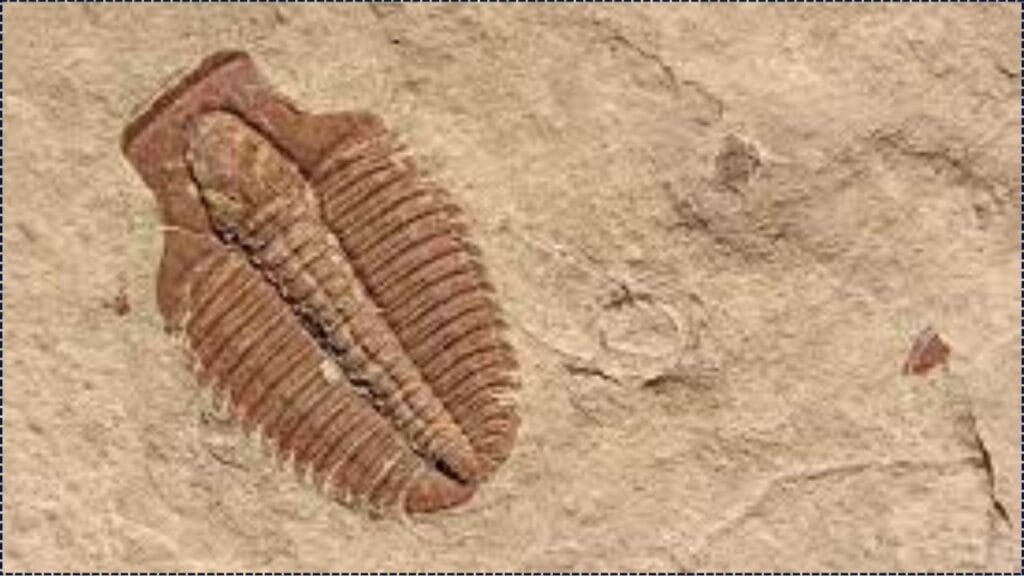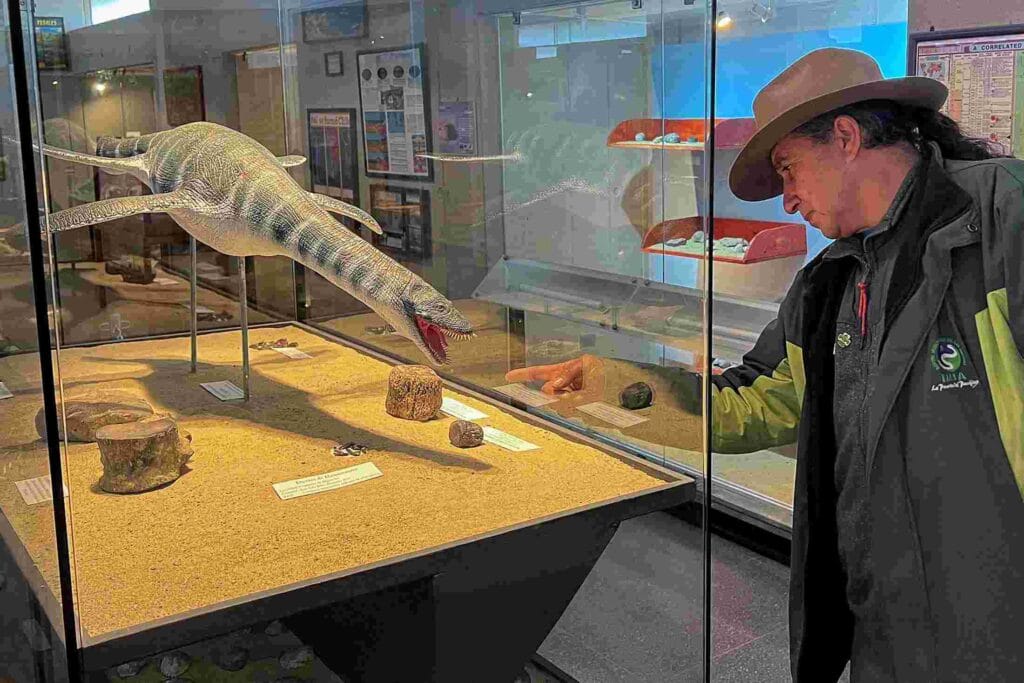Picture a serene day at the beach, with sunlight dancing on the waves and the joy of building sandcastles. For one fortunate beachgoer in Somerset, England, a simple walk along the shore blossomed into a heartwarming connection to Earth’s ancient past. A young girl and her father, exploring together, discovered a fossil over 200 million years old, sparking a wave of shared excitement that unites scientists and communities worldwide in awe and curiosity.

This remarkable find, believed to be from one of the largest marine reptiles to ever grace our oceans, is more than a scientific treasure—it’s a reminder of our planet’s enduring stories and our shared journey to uncover them. Paleontologists are now tenderly studying this fossil, weaving new insights about evolution and ancient seas that inspire us all. This discovery invites families, dreamers, and learners to come together, celebrating the wonder of our world and fostering a collective commitment to cherish and protect its history for generations to come.
Beachgoer Discovers Fossil Believed to Be Millions of Years Old
| Feature | Details |
|---|---|
| Who Discovered It | 11-year-old Ruby Reynolds and her dad, Justin Reynolds |
| What Was Found | Fossilized jawbone (surangular bone) of a massive ichthyosaur |
| Estimated Age | About 202 million years old (Late Triassic Period) |
| Species | Ichthyotitan severnensis, a newly classified species |
| Size of Creature | Estimated 72–85 feet long, rivaling today’s blue whale |
| Scientific Analysis | Led by Dr. Dean Lomax, University of Manchester |
| Fossil Display Location | Bristol Museum and Art Gallery |
| Source | Bristol Museum Official Site |
From an innocent beach walk to shaking up the world of paleontology, this story of Ruby Reynolds and the ichthyosaur shows how wonder and curiosity can lead to massive discoveries. Whether you’re a scientist, a teacher, a parent, or just a curious kid, there’s always something new to find. The world is full of ancient secrets — you just have to know where to look.
So, What Exactly Was Discovered?
In 2020, young Ruby Reynolds and her father shared a joyful walk along the fossil-rich shores of Somerset, England, where a simple moment of curiosity blossomed into a gift for all humanity. Amid the clay, they spotted what seemed like a massive bone, later revealed to be part of a jawbone from an extraordinary creature—an ichthyosaur, a dolphin-like marine reptile from a time long past. This heartwarming find reminds us how a child’s wonder can connect us all to the deep history of our planet.
With the gentle guidance of experts like Dr. Dean Lomax, the bone was identified as the surangular part of the jaw, belonging to a newly named species, Ichthyotitan severnensis—meaning “giant fish-lizard from the Severn.” This discovery, sparked by a family’s shared adventure, invites communities, scientists, and dreamers to unite in awe of Earth’s ancient oceans. It inspires us to nurture curiosity in every child and to protect the natural world that holds such wonders, fostering a shared commitment to care for our planet and its timeless stories.

Why Is This Discovery So Important?
This isn’t just a cool fossil for show-and-tell. It’s a game-changer. Here’s why:
- Size: Estimated at over 80 feet, this beast rivals the modern-day blue whale.
- Scientific Value: It’s the second such jawbone discovered in the area, offering more data points for researchers.
- New Species: It confirms the existence of a previously unknown type of ichthyosaur.
According to NPR, the bone is estimated to be 202 million years old, dating back to the end of the Triassic Period — a time when many marine species were wiped out in a mass extinction.
Let’s Get Nerdy: The Science Behind It
What is an Ichthyosaur?
Think of an ichthyosaur as a mash-up between a dolphin and a shark. These creatures were not dinosaurs but marine reptiles that lived around the same time. They had paddle-like limbs, big eyes, and were swift swimmers.
What is the Surangular Bone?
The surangular is a major bone in the lower jaw of reptiles. In ichthyosaurs, it’s robust and gives scientists clues about the size and feeding habits of the animal. The one Ruby found is HUGE, indicating a creature that likely topped 80 feet in length.
How Do Scientists Study These Fossils?
- Initial Inspection: Experts like Dr. Lomax check for unique bone structure.
- Comparison: They compare it to other known ichthyosaur fossils.
- 3D Modeling: Using scans and digital tools to reconstruct the animal.
- Publishing Results: Findings are peer-reviewed and published in journals for global scientists to examine.
From the Beach to the Museum
After Ruby and Justin found the fossil, they reached out to experts. It was carefully excavated and sent to Bristol Museum and Art Gallery, where it will be displayed for the public. Ruby was even listed as a co-author on the scientific paper. That’s right — this 11-year-old is now a published scientist!
Dr. Lomax compared Ruby’s discovery to that of Mary Anning, the famous 19th-century fossil hunter. It’s a reminder that sometimes, it’s everyday people who make the biggest contributions to science.
Related Links
Mysterious ‘Ghost’ Lineage Discovered In Tibet — DNA Study Reveals Ancient Human Secrets
Astronomers Detect Bizarre Repeating Signals From Space — Unlike Anything Ever Seen Before
Retiring Under FERS? This New Proposal Could Change Everything—Here’s What’s Inside
What Can You Learn From This?
Practical Advice for Amateur Fossil Hunters
- Go to the Right Locations: Places like Lyme Regis in the UK or the Badlands in the U.S. are fossil hotspots.
- Know the Tides: Always check tide schedules to stay safe.
- Bring the Right Tools: A small hammer, chisel, and safety goggles are a must.
- Get Permission: Some areas are protected; make sure you’re allowed to collect.
- Contact a Pro: If you find something unusual, don’t keep it to yourself. Reach out to a local museum or university.
Educational Impact
This story is a powerful reminder to stay curious. Kids and adults alike can contribute to real scientific discovery. Museums and fossil groups often have family events and dig days, so get out there!
FAQs
Was the fossil really found by a child?
Yes! Ruby Reynolds, an 11-year-old, discovered it with her dad.
How old is the fossil?
About 202 million years old, dating back to the Late Triassic Period.
Can I visit the fossil?
Yes, it will be on display at Bristol Museum.
Are ichthyosaurs dinosaurs?
No, they are marine reptiles. They lived during the same time but aren’t technically dinosaurs.
How can I learn fossil hunting?
Join local paleontology groups, attend museum events, and read guides from reliable sources like Smithsonian.








